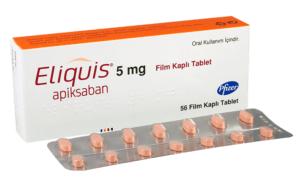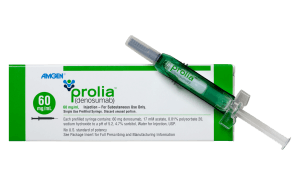
While the COVID-19 pandemic was in full swing between early 2020 and the end of 2021, the focus of attention for the medical world was naturally on stopping the spread of the virus and treating people who had been infected. After this momentous battle had achieved some degree of control over the spread of infection, it allowed the world to take a breath, and it became evident that COVID-19 could also have brought with it some unwanted long-term effects.
The term “Long COVID” became more familiar as these effects were researched more thoroughly. This term refers to a range of symptoms that continue for weeks or even months after the infection has passed. As we gain more knowledge about the virus, and are managing to exert more significant levels of control and treatment, the focus is increasingly shifting to this long-term condition and the unique ways it affects different population segments.
What is Long COVID?
Long COVID describes a set of debilitating symptoms that can linger for weeks or months after people infected with the SARS-CoV-2 virus have recovered from the direct infection, and the primary symptoms of the viral infection have abated.
In some individuals, the main symptoms are primarily related to neurological functions, when they experience depression, fatigue or trouble concentrating (“brain fog”) and sensory changes, especially in taste and smell.
Other symptoms can be physical, such as difficulty in breathing, and chest or joint pain. There are no limits to the range of tissues and organs in the body that can be affected by the virus.
It has been found that the occurrence or severity of Long COVID has no relationship with the severity of the initial illness. Even some people with mild cases or completely asymptomatic infections with the COVID-19 virus can experience these persistent symptoms. It can also happen to people of any age. This makes Long COVID a completely unpredictable health outcome post-infection. The only discernable feature so far has been that people infected with one of the earlier versions of the virus, known as the 2021 Omicron variant, suffer more severe symptoms. Long COVID also occurs more frequently in these people.
Long COVID and why women are more affected
Evidence suggests that women are disproportionately affected by Long COVID. A report in the NY Times states that “Women were one and a half times as likely as men to develop Long COVID.” Women who develop Long COVID also show a wider range of symptoms than men. Women are more likely to experience persistent symptoms after infection, even if they initially had a mild illness. While the reasons behind this are not yet entirely clear, biological differences, including immune system responses and hormonal factors, may play a role.
In particular, women with Long COVID often report chronic fatigue, which has been well established as more common in women than men. They also more frequently experience neurological symptoms such as memory loss, difficulty concentrating, and even anxiety or depression. These persistent issues can severely affect daily life, hindering personal relationships, professional productivity, and overall quality of life.
For pre-menopausal women, there can be an impact from COVID-19 infections on their menstrual cycles, with an increasing number of women reporting changes in their periods post-COVID, including heavier flows, irregular cycles, or even missed periods. There are plausible biological explanations for these phenomena. The body’s immune system responds to infections with inflammation, which can influence hormone production, potentially leading to menstrual irregularities. As well, the stress of dealing with a debilitating illness like Long COVID can disrupt the hypothalamic-pituitary-adrenal (HPA) axis. This can result in hormonal imbalances, manifesting as changes in the menstrual cycle.
Long COVID and perimenopause
Perimenopause is characterized by hormonal fluctuations, which disrupt the menstrual cycle, eventually leading to menopause, when periods cease altogether. In the earlier stages of perimenopause, COVID-19 infections can intensify already existing symptoms like irregular periods, hot flashes, sleep disturbances, and mood changes. It may amplify these symptoms, with stress and illness potentially accelerating the onset of menopause in some cases.
Long COVID and menopause
There is a strong statistical linkage between Long COVID and women around the age when menopause typically begins. However, it’s not yet established whether this is a cause-and-effect relationship, or simply coincidental. According to one extensive analysis conducted in the UK, about 60% of the people who suffer from Long COVID symptoms are women. As well, the mean age of people with Long COVID was reported to be 46, which is roughly the start of menopause in the majority of cases. Finally, it was found that one-third of all women suffering from Long COVID reported disturbances to their menstrual cycles.
While it’s too soon for solid scientific evidence based on thorough research (Long COVID only began to be noticed about twelve months after the pandemic started), some common features of Long COVID match the well-known triggers of the health disturbances experienced by many women in menopause.
Many of the symptoms – brain fog, fatigue, reduced stamina, headaches, dizziness, poor sleep, reduced concentration and muscle pains – are similar to perimenopausal and menopausal symptoms. Most of these can be traced back to hormonal disturbances, and it is now thought that the virus may affect estrogen levels even more than the expected decline experienced post-menopause. Some symptoms of Long COVID, such as fatigue, mood changes, and cognitive issues, can overlap with symptoms of low estrogen, making it harder for doctors to identify the cause. This possible interplay between Long COVID and hormonal changes in post-menopausal women will need further research before any conclusions can be reached.
How Long COVID interferes with estrogen
Hormonal changes that proceed through the transition from fertility to menopause involve a steep decline in estrogen levels (down 80%) and progesterone (down 90%). There are now some indications that Long COVID can accelerate the rate of decline and push the levels even lower. The broader implications of these hormonal changes on women’s overall health must be considered. Hormonal imbalances can significantly impact various body functions and may contribute to conditions like Polycystic Ovary Syndrome (PCOS), osteoporosis, heart disease, and mental health disorders. Therefore, the potential long-term effects of COVID-19 on women’s hormone levels and their overall health could be serious.
Healthcare providers must understand these unique challenges peri- and post-menopausal women face in the context of Long COVID. Increased research and education are needed to promote more accurate diagnoses, better symptom management, and a more holistic approach to care. Women experiencing any of the associated symptoms should consult with healthcare professionals to ensure they receive the necessary support and treatment. A good case could be made for women who have been infected by the virus to take some preemptive care and consult with a specialist who can monitor hormone levels more closely, and take steps to slow down or reverse the disturbances that Long COVID could cause later on.
Frequently Asked Questions
What are the symptoms of Long COVID?
According to the American Medical Association, the more common symptoms are feeling extremely tired or depleted after exertion, cognitive issues (brain fog), accelerated heartbeat, and losing the sense of smell and taste.
Who is more prone to Long COVID?
A new study In the US has found with the greatest risk of suffering Long COVID were more likely to be older females with preexisting health conditions.
What percentage of people develop long-term COVID?
According to US central statistics, 35.5 million (28%) out of the 127 million people who have been infected with the COVID-19 virus have developed Long COVID.
Is the risk of Long COVID linked with the severity of the initial infection?
From early studies, it appears that the risk of long COVID is not linked with the severity of the initial infection. In one study, nearly three-quarters of the infected people who went on to develop Long COVID had milder forms of the infection and did not require hospitalization. And relevant to the subject of Long COVID and menopause, men were nearly twice as likely to have a more severe infection – needing hospitalization – than women (33% vs 18% respectively).















